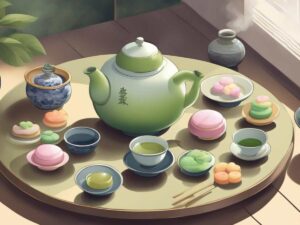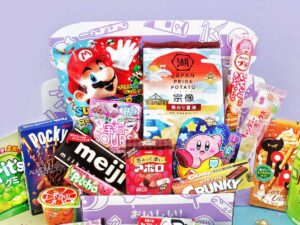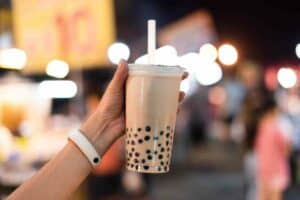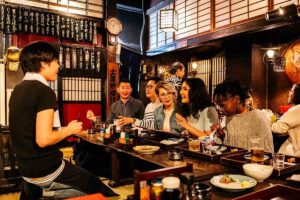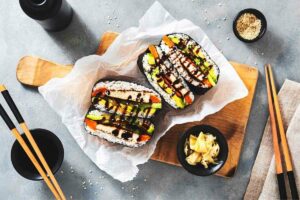Japan is mostly associated with rice dishes, and almost every meal has rice as an ingredient.
Essentially, rice is the staple food of the country. Still, the people love bread too, or pan as it is known in Japanese.
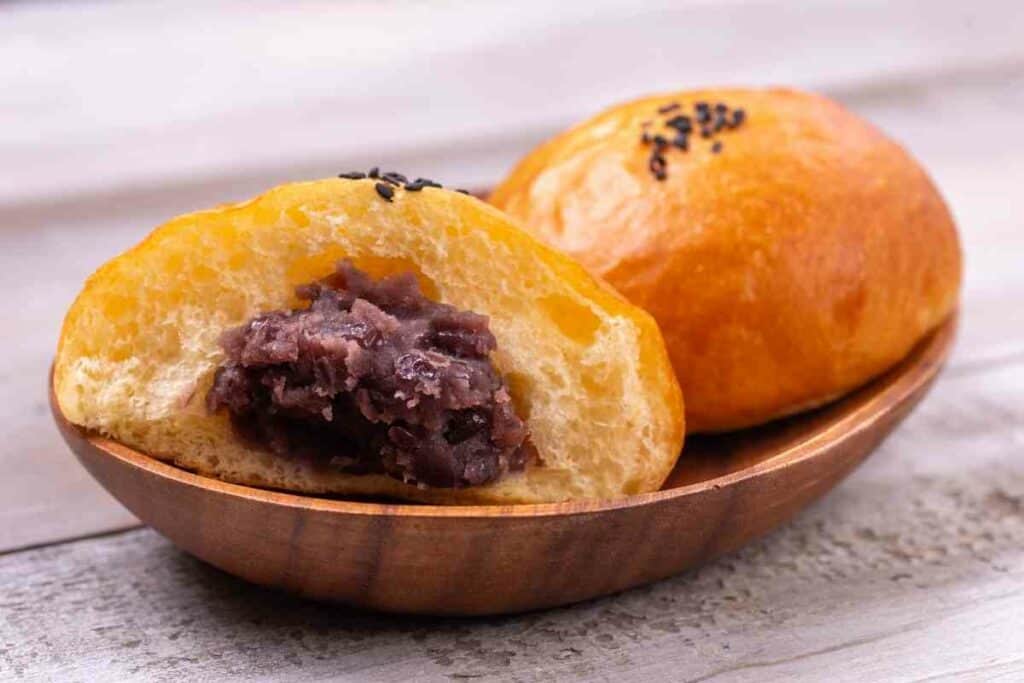
Bread in Japan started being popular in the 19th Century.
Today – You will find bakeries almost everywhere you go- in residential areas, department stores, and even train stations.
The following are nine types of Japanese bread to enjoy.
Table of Contents
1. Anpan – Red Bean Paste Bread
Anpan is one of the oldest types of bread in Japan.
It was invented in the rear half of the 19th Century by Yasubee Kimura. The shop he used to prepare and sell anpan is still operational today and is located in Ginza.
This bread is a round, sweet roll that is stuffed with red bean paste, as hinted by its name. It is also topped with poppy or sesame seeds.
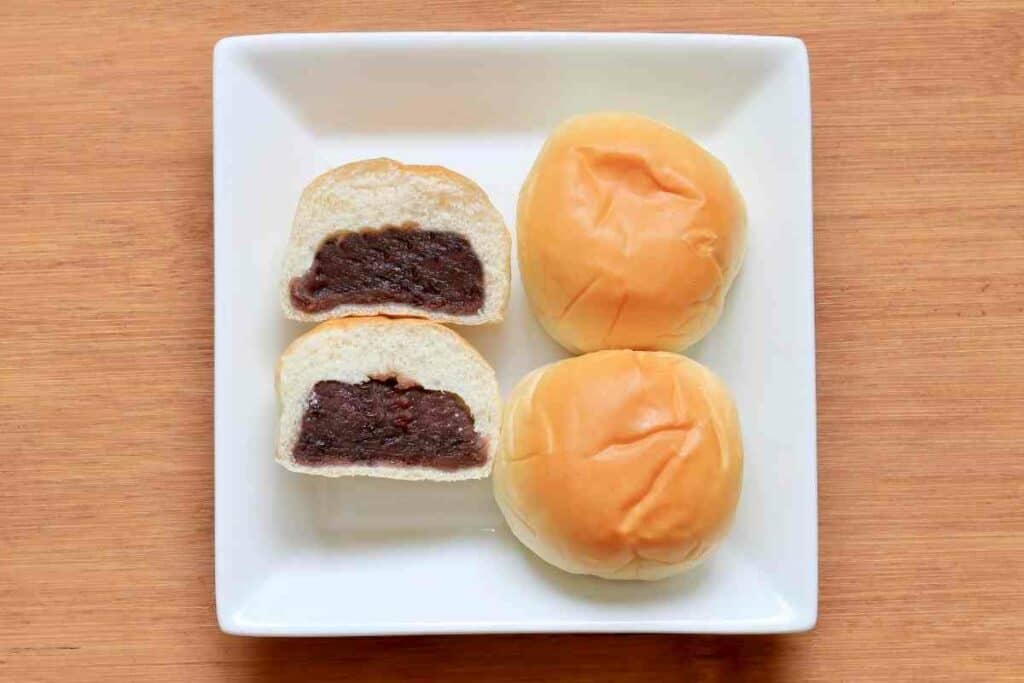
Anpan has a subtle sweet taste, which makes it perfect for lunch or dessert.
Besides red bean paste, there are other fillings that can be used in the bread, such as mashed chestnuts and mashed sweet potatoes.
There are two types of anpan bread:
- Kurumi-anpan is anpan with walnuts in the dough.
- An-doughnut is anpan that has been deep-fried with powdered sugar.
2. Agepan – Deep Fried Bread
Agepan is basically a deep-fried hot dog bun that is coated with sugar.
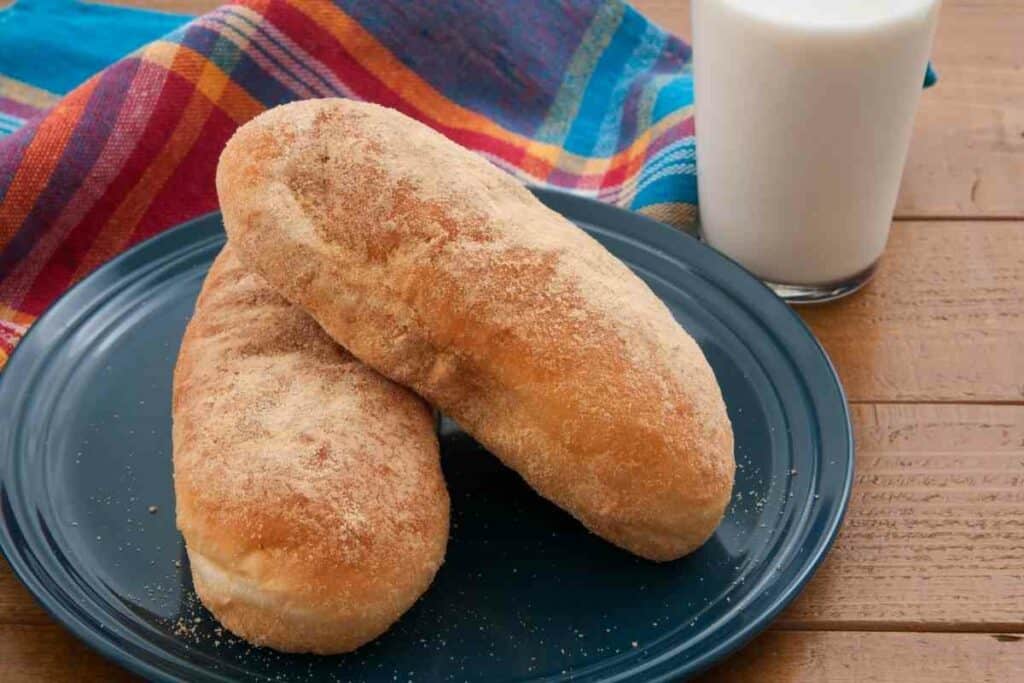
There are different fillings that can be used for this bread, and they include:
- strawberry cream
- custard cream
- almond milk cream
Agepan was invented soon after WW2 to feed malnourished children and give them enough energy to survive the days when Japan was facing a food shortage.
Since it has relatively high calories, the bread would satisfy children quite fast.
Originally – Agepan was served in schools as lunch, but with time, everyone started consuming it. You can find it at local bakeries or agepan shops. However, it is not always readily available in supermarkets.
3. Yakisoba Pan
As per the name, yakisoba pan is a hot dog bun with yakisoba noodles sandwiched in between.
Admittedly, this combination is a little weird, considering it is starch that is sandwiched in starch. However, it is worth a try.
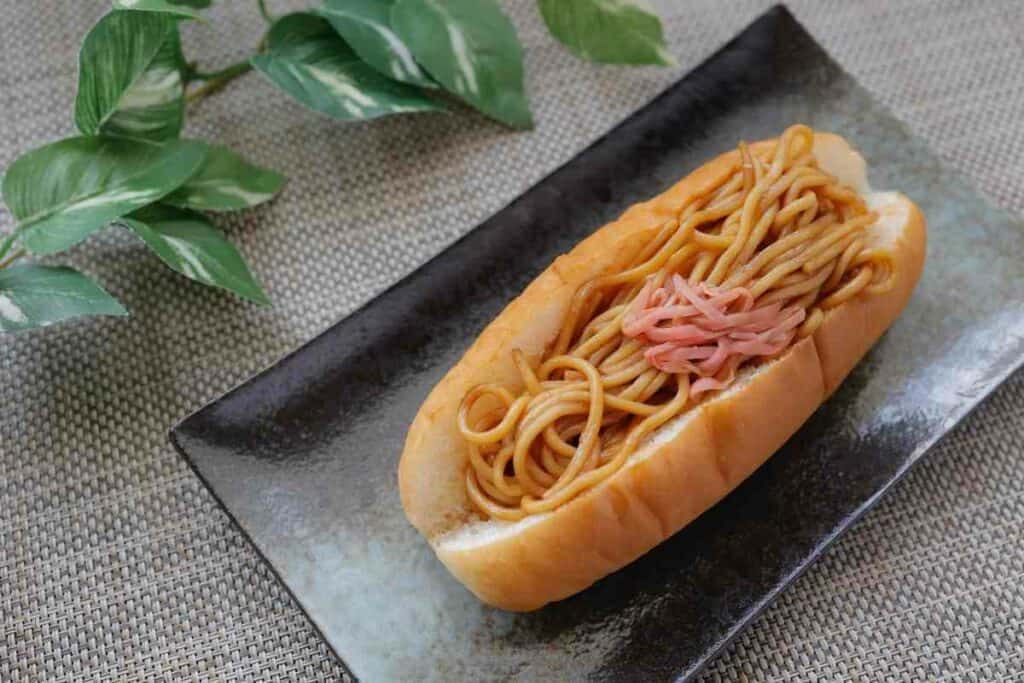
You would be surprised at how well the mix of the spicy taste of the noodles and the sweet flavor of the bun goes well together.
You can find agepan at supermarkets, convenience stores, and local bakery shops.
4. Melon Pan
Melon pan is named that way because it resembles a melon fruit.
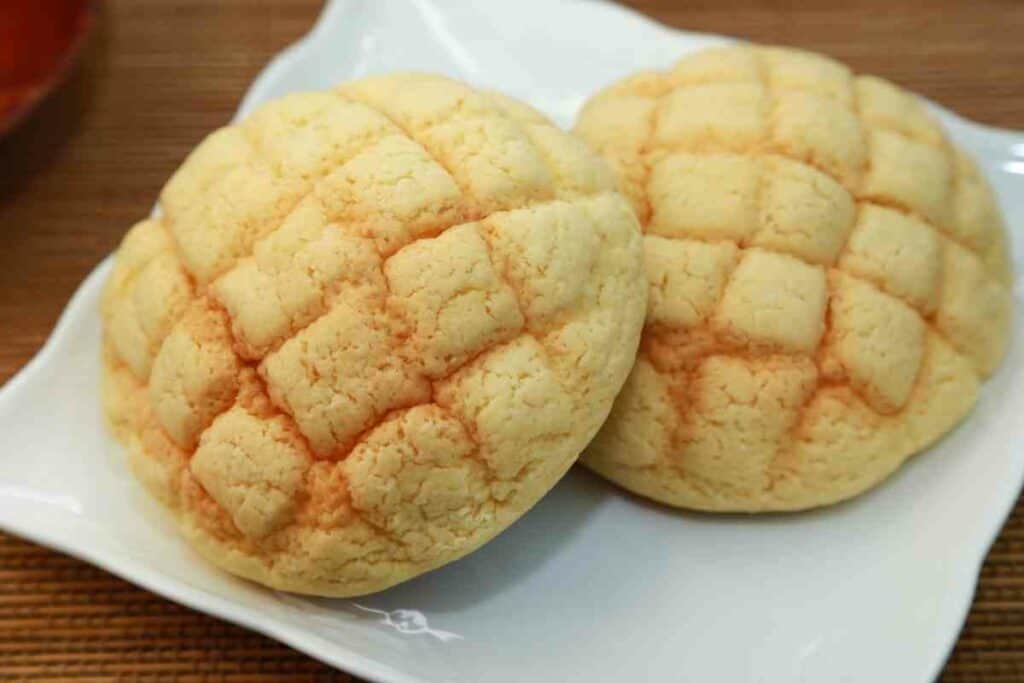
Its bottom is a fluffy bread that is covered with a layer of sweet cookie-like dough. The softness of the bread and the crispiness of the top layer gives the bread an interesting texture.
While it looks like melon fruit, it does not necessarily taste like one. Still, some bakers try to increase the authenticity of the bread by adding melon cream to manipulate the taste.
Others use a green-colored dough to make it appear like a melon. You can find melon pan in bakeries or convenience stores.
5. Pork Cutlet Sandwich (Katsu Sando)
Katsu sando is white bread that has tonkatsu, or pork cutlet, sandwiched in between.
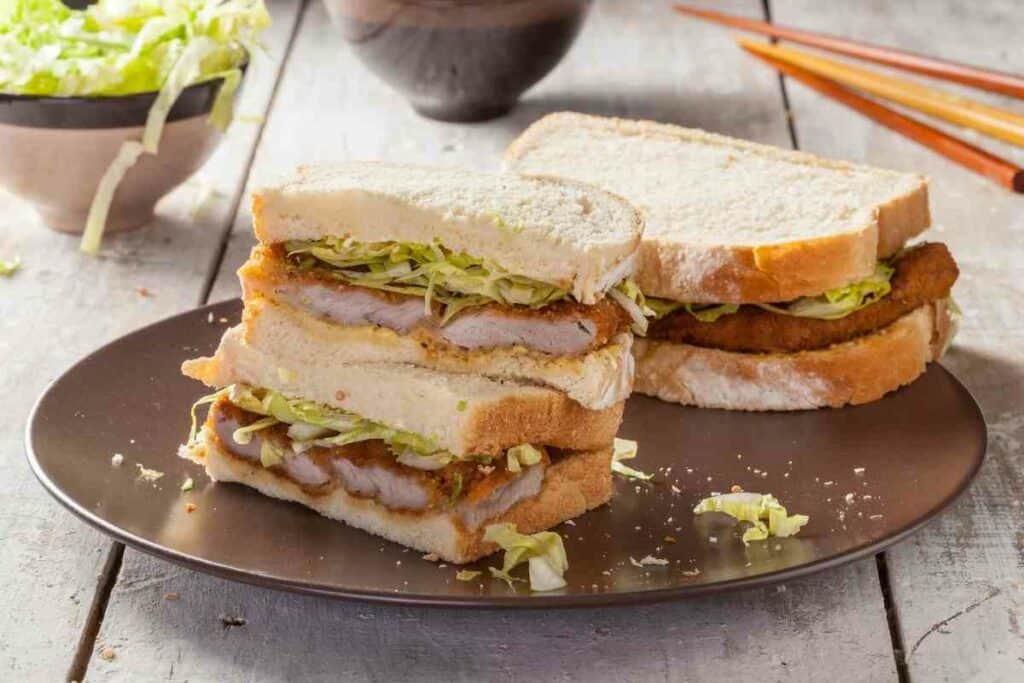
The tonkatsu is usually flavored with tonkatsu sauce, and sometimes, shredded cabbage is added. The sauce is spicy to complement the subtle sweet taste of the bread.
Katsu sando is great as a lunch snack or even dessert.
You can find it in bakeries, convenience stores, and supermarkets. The bread is also always available in tonkatsu restaurants like maisen and wako.
6. Coppe Pan
Coppe pan looks like coupe or hot dog buns. It is soft with a subtly sweet taste.
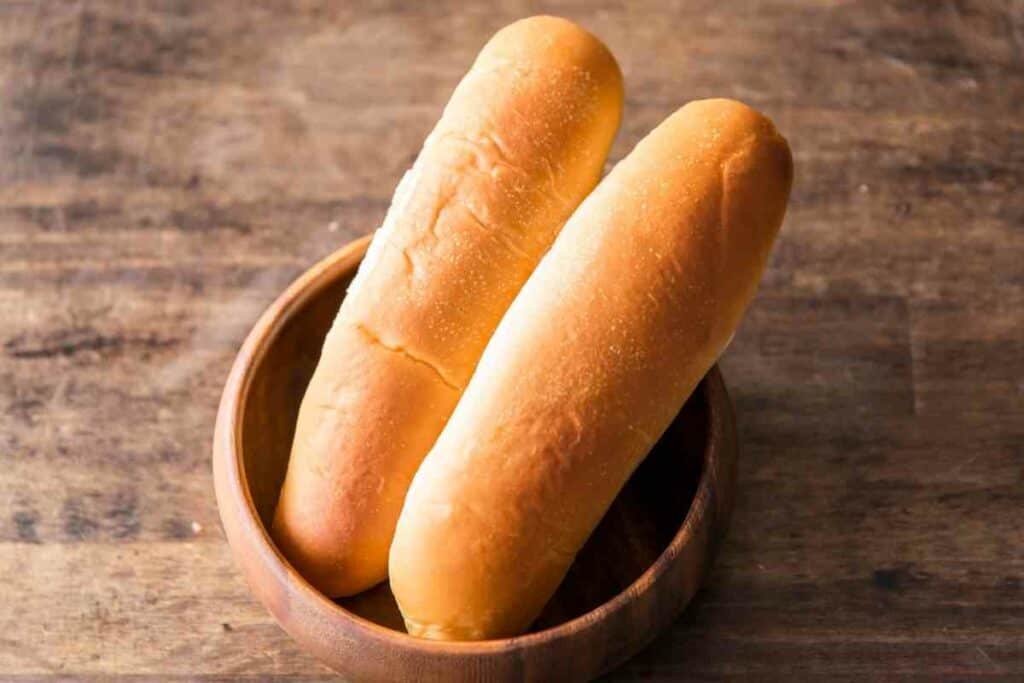
There are many different fillings used for this bread, such as:
- red bean paste
- peanut butter
- batter
- tonkatsu
- hams
- and eggs
Coppe pan can be a snack or a meal depending on the filling used. The bread was first made in 1919 and was primarily served as a school lunch until the 1980s when it became mainstream.
7. Chocopan
As its name suggests, chocopan bread is a bun with a chocolate cream paste filling.
As such, it is deliciously sweet and mainly used as a dessert. Shape aside, chocopan is very similar to the pain au chocolate of France.
The dough is chocolate flavored, and essentially, the bread is very popular among kids. It is often shaped into cute characters to entice the kids further.
One popular type of chocopan is the choco korone. It is European-inspired, cone-shaped, and with a lot of chocolate cream.
8. White Bread / Shoku pan
Shoku pan looks like toast or pain de mie from France.
This square-shaped white bread with a fluffy and doughy texture is not originally from Japan. It was introduced in Japan from England in the 19th Century. Also, it was mostly consumed by foreigners.
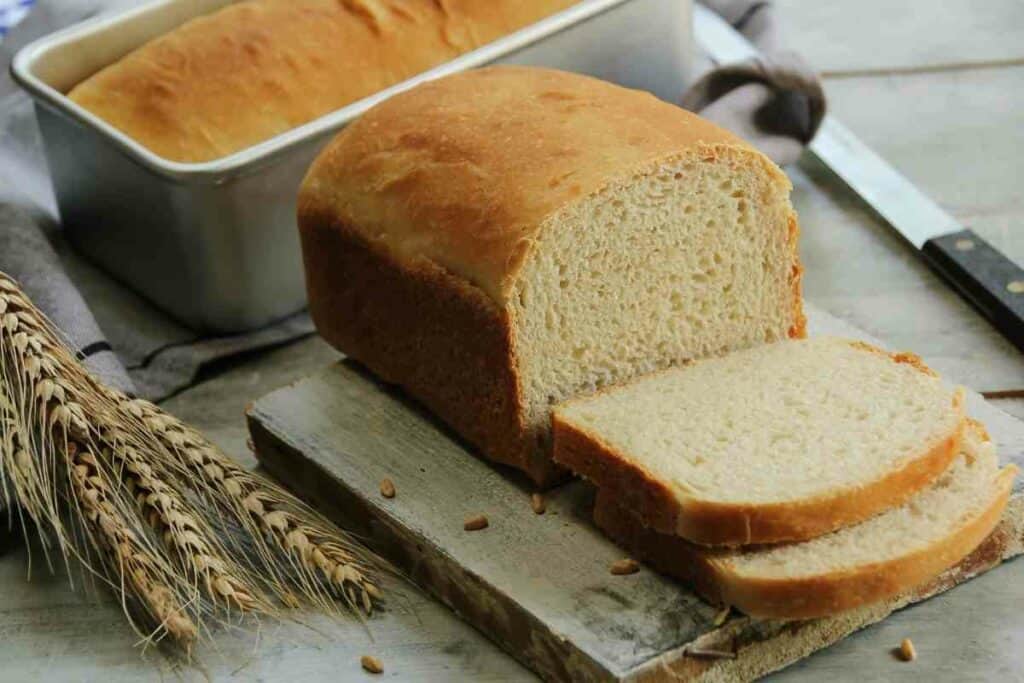
After the second world war, most of the consumers of shoku pan were American military people that lived in Japan.
After a while, though, the locals took it up, and now it is one of the common types of bread consumed in Japan.
Shoku pan is mostly used for breakfast with spreads such as:
- marmalade
- margarine
- and butter
You can easily find it at convenience stores and supermarkets.
9. Curry Bread
Curry bread is basically a deep-fried bread bun that is filled with thick Japanese curry.
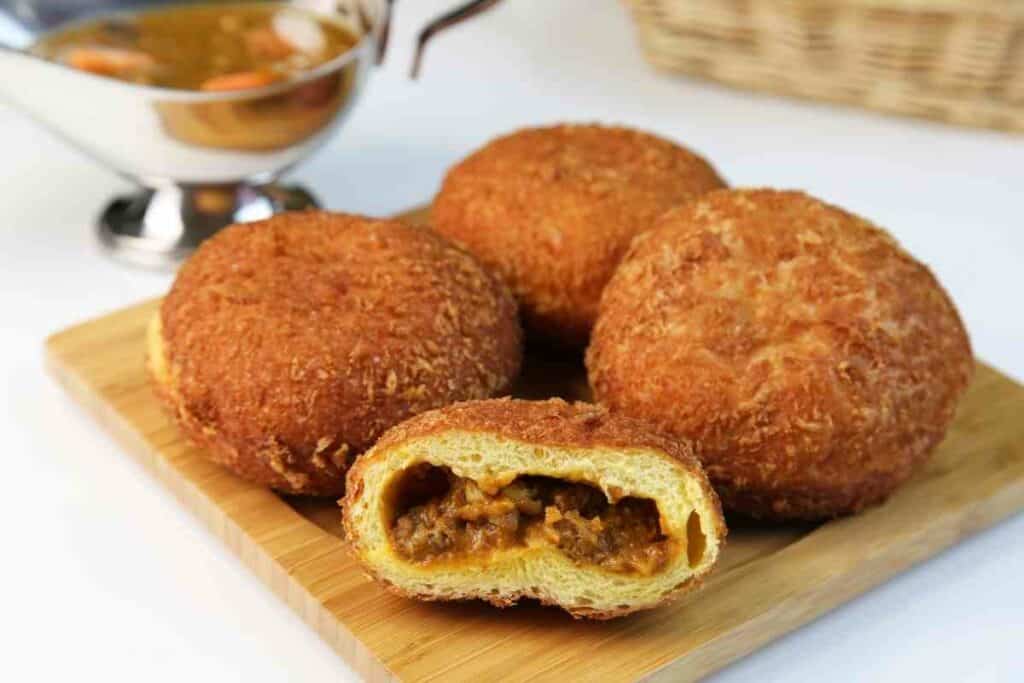
After filling with curry, it is deep-fried with breadcrumbs, or panko, as they are referred to in Japan.
Primarily, the curry bread has a shape like that of a rugby ball, but the shape can vary depending on the baker.
The types of curry used can change, too, with some bakers mixing their curry with cheese.
The History of Japanese Bread
Bread is not a native food in Japan.
It was first introduced into the country by foreigners in the mid-sixteenth Century.
Europeans, specifically the Portuguese, brought bread to Japan during their trade runs.
However, bread was banned in Japan in the 17th Century because of its affiliation with Christianity.
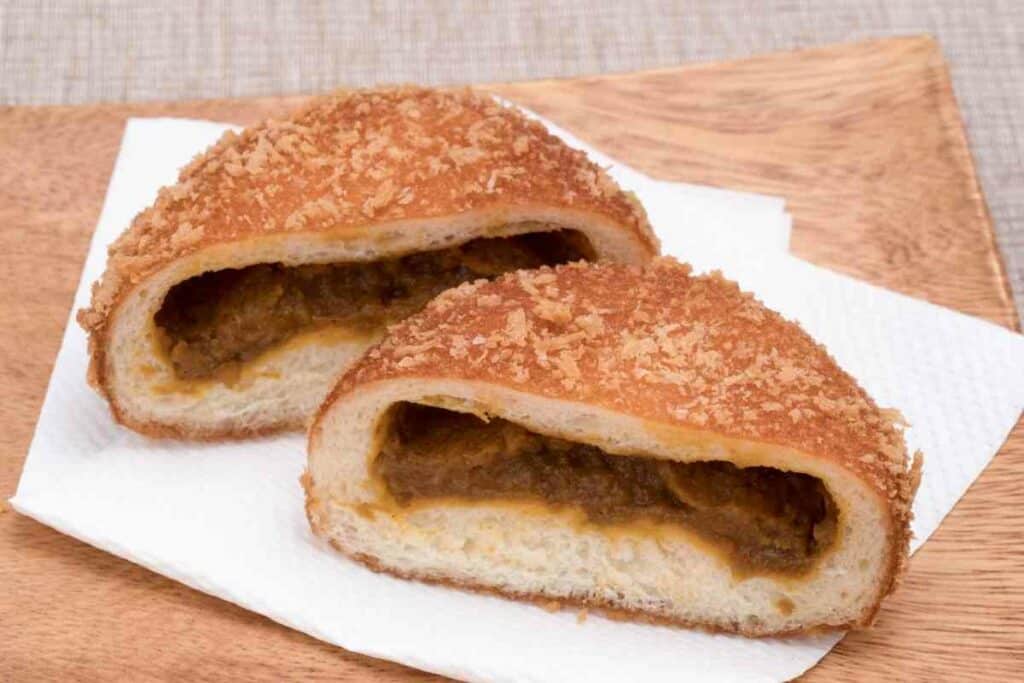
Since then, bread was rare in Japan until the 19th Century when it slowly started becoming common.
The need for bread arose due to food shortages and wars. The first time bread was baked again was in 1842.
The baking took place at the Shizuoka Prefecture, which is now a world heritage site. Bread gained popularity at a very slow rate because the Japanese staple food is rice.
In 1874 – Yasubei Kimura invented anpan, which is the first locally made bread. Anpan became increasingly popular among the locals and even opened up people to the idea of bread.
Originally, bread was baked to combat food shortages and feed soldiers during wars.
Now, it is among the most loved foods in Japan, and there are several types, as mentioned above in the article.
Final Words
Most people associate the Japanese with rice, which is right by itself, considering it is the staple food.
However, the Japanese enjoy other types of foods as well, and bread is one of those.
While it is not a native food, bread is pretty mainstream today, with many different types in bakeries and convenience stores.
The Japanese use bread for dessert in most cases. It also comes through as a snack in between meals. Anpan is among the first Japanese-made bread, and it is also very popular.
Other types of Japanese bread to enjoy include agepan, chocopan, curry bread, katsu sando, yakisoba pan, and shoku pan.
- Japanese Traditional Sweets (Wagashi): A Guide to Their Origins and Varieties
- A Taste of Japan in Every Bite – Japanese Candy & Snack Box Review
- Bubble Tea vs Boba Compared: What’s the Difference?
- Best Izakaya Foods for a Relaxed Night Out (My Top 10 Picks)
- Edo Kiriko Whiskey Glasses (Japanese Heritage in Every Pour)
- Japanese Viral Foods on Social Media (Discover the Top 10)

